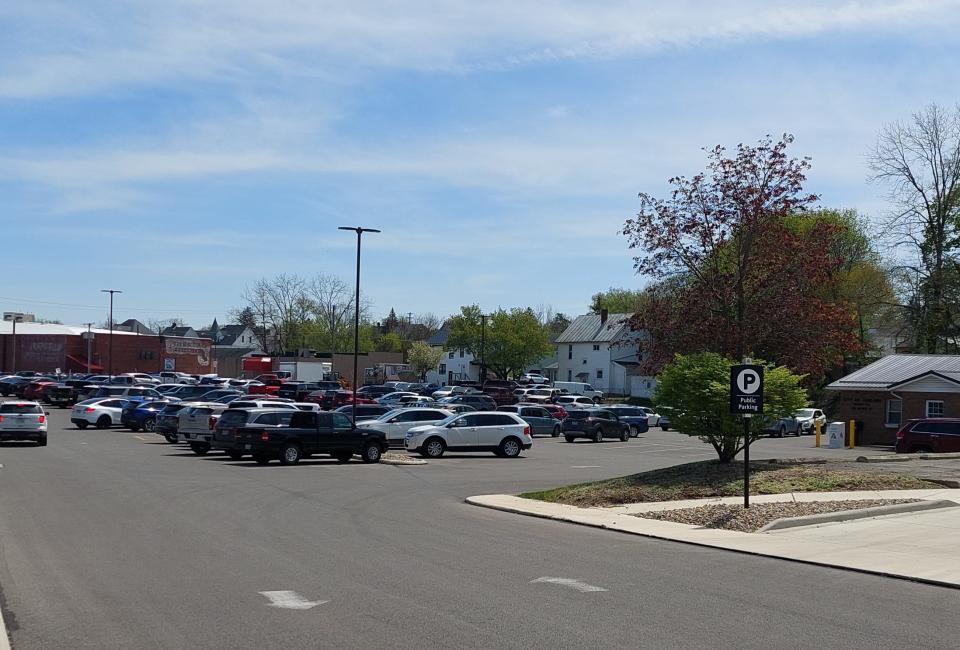Ashland City Lot B hits century mark, and is testament to 'some things never change'
This month we will commemorate 100 years of parking in City Lot B on Luther Street, and boy, some things never change.
The Ashland village council was kicking around parking woes of a different sort back in the early 1900s.
In 1905, Ashland could boast of nearly five miles of paved streets, including all of the business districts and many residential areas.
Pleasant Street and Cleveland Avenue had been just paved, using nearly 4,000 cubic yards of gravel, 1,000 cubic yards of sand and more than 585,000 bricks.
Ashland boasted “modern” streets, but farmers still needed a place to secure their horses. Those who came to town to do 15 minutes of business did not want to have to pony up for board at one of the 10-cent barns in town. They informed the merchants they would take their business elsewhere if they didn’t have convenient hitching posts.

Hitching posts dilemma just won't go away
Throughout 1908, council wrestled with the dilemma of the hitching posts. They thought it was solved when they rented a quarter acre on east Main, behind the YMCA that was built in 1910. Ironically, it is now a parking lot.
However, the hitching post remained a headache for the town. In 1910, people were complaining its location was inconvenient − requiring a downhill walk through back alleys − and it was plagued by theft.
Mayor Minamyer responded that hitching on the street would block traffic and obstruct the fire department. In frustration, the mayor said this vexing question was “impossible to settle in five minutes time.”
By 1924, hitching posts had given way to automobile parking, and that spring, construction began on a city parking lot on Luther Street. Two old houses were moved elsewhere, to be used as storage sheds, meaning several families were evicted.

Now automobiles, and timed parking, come into play
The municipal parking lot now known as City Lot B opened May 16, 1924, to much fanfare. Chief of Police Gorham declared that several hundred cars could park in the cinder lot, and Mayor Art Mason was optimistic this would greatly alleviate the “parking problems” in the city.
More: Norris Grove drew thousands to it's July 4, 1911, opening day near Orange
Four years later, grumbling was heard. People parking on Main Street caused traffic problems, and some merchants thought the solution was to enforce the one-hour parking limit. One councilman suggested eliminating parking altogether on Main Street.
The police chief encouraged local people to park in the city lot on Luther Street. He pointed out the previous Saturday night, only six cars had parked in a lot that would hold 500. He was willing to station a man there on Saturday “to turn on the lights and take care of cars.”
By 1940, Ashland was still hashing over its parking woes. While the town was lucky to have free parking just a block from Main Street, the lot west of Luther Street was not sufficient Saturdays when everyone came to do their shopping.
Solutions such as parking meters and additional lots on the north side of Main were tossed around. There also was the possibility of an extension to the east of Luther street.
I don’t have room here to detail the “new era of progress” that Mayor Hostetler inaugurated in 1959, complete with blacktopped lots and parking meters. Suffice it to say complaints about parking and various solutions have been kicking around Ashland for a very long time.
This article originally appeared on Ashland Times Gazette: Parking squabbles are not a modern thing; Ashland fought them in 1905

